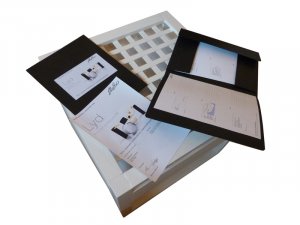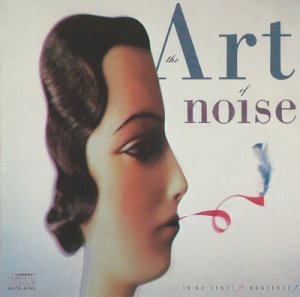2-ch artikkel: Calibration, target curves
Kapittelet om target kurver ble oppdatert for 2-kanal versjonen, men er fremdeles bare en kort og innledende tekst. Her er litt mere informasjon om problematikken rundt måling og hvordan eq-korreksjon skal gjøres.
Kan være nyttig for de som bygger systemer selv, men også alle andre som prøver å forbedre ting med dsp og eq. Forsåvidt et bra eksempel på at det ofte er bedre å la ting få være i fred, fordi en prøver å rette feil som egentlig ikke fins.
Teksten er på engelsk, men det gjør jo ikke noe.
----------------
Target curves and how to measure:
The chapter on Calibration - Target curves was updated for the 2-ch article, but still is a very brief and compressed text which does not explain everything in detail.
When trying out different target curves and applying eq to force the measured response to match this target, there are some issues you need to consider.
Because the measurement may not be a correct representation of the response actually present, so that the corrections applied - either done manually or by using automatic room correction software - will not give the desired response, even if it looks that way from the measurement.
At higher freqs the direct sound totally dominates, and what you see on the measurement is a good representation of the actual response - if done right.
Any objects very close to the mic - such as mic stand, mic attachment clip, the back of the sofa or chair, will affect this part of the response as well. Use blankets or something similar to absorb these very early reflections, but even then there will be reflections and those reflections will affect the measurement.
For hf, the easiest and best solution is to remove the chair/seating.
At mid freqs the boundary conditions around the mic - seating, floor - will affect the response severely. You can see this by comparing measurements with and without a chair.
When a persons sits in the chair, the response will also change.
So, what to do. I have seen people making a dummy listener placed in the chair, for measurements. Others suggest removing the chair and other items close to the listening position.
The problem will typically be present in the 200hz - 2khz range. Worst around 500-1000hz.
How severely affect the response is also depends on the properties of the sound field. A directional sound field - i.e. the direction of the particle velocity does not change with frequency - behaves different form a more diffuse sound field with lots of relfections.
At lower freqs those very close surfaces does not have the same impact on the measurement. It is now the boundary conditions around the listening position and around the speaker that causes deviations.
The answer is to not correct for any changes in the response caused by the chair or the listener. You want a system that presents a smooth, flat response in the room, and when the presence of a listener and chair changes this response, that should not be corrected for. Because those changes will always be present and can be considered as part of the hearing mechanism.
The easiest solution is to use a speaker that has been voiced and tuned to give exactly this flat, smooth response, no eq necessary. Deviations from a smooth curve is caused by the room, and if you can find what is causing it, you can change things with acoustic treatment.
If you have a custom system that needs eq simply because there is no reference for how to set it up to give a proper response, there is no simple and quick fix. You can try to use nearfield measurements to get more information, but two problems arise - the measurement will still be affected by boundary reflections, and the response too close to the source will not be representative for how it looks at some distance. Especially horns are tricky here, you can not use a measurement taken at the mouth of a horn for anything useful, at least get to a distance equal to the largest dimension of the mouth.
If you need a measurement for automatic room correction, you should remove the chair and any other objects close to the measurement position. You want the room correction to fix reflections around the speaker, which will appear similar across the whole room, but you do not want corrections for a chair that will change its acoustical appearance completely once you sit down in it.
At low freqs, in the bass range, the room dominates the response and here eq should be used to reduce those effects. Ideally, you should fix it with acoustic treatment, but usually that is not possible due to the size required. It is still possible to get very reasonable results using a combination of some bass treatment and eq.
To summarize - be careful with any eq corrections throughout the midrange, usually a good speaker will not need any eq here.
Kapittelet om target kurver ble oppdatert for 2-kanal versjonen, men er fremdeles bare en kort og innledende tekst. Her er litt mere informasjon om problematikken rundt måling og hvordan eq-korreksjon skal gjøres.
Kan være nyttig for de som bygger systemer selv, men også alle andre som prøver å forbedre ting med dsp og eq. Forsåvidt et bra eksempel på at det ofte er bedre å la ting få være i fred, fordi en prøver å rette feil som egentlig ikke fins.
Teksten er på engelsk, men det gjør jo ikke noe.
----------------
Target curves and how to measure:
The chapter on Calibration - Target curves was updated for the 2-ch article, but still is a very brief and compressed text which does not explain everything in detail.
When trying out different target curves and applying eq to force the measured response to match this target, there are some issues you need to consider.
Because the measurement may not be a correct representation of the response actually present, so that the corrections applied - either done manually or by using automatic room correction software - will not give the desired response, even if it looks that way from the measurement.
At higher freqs the direct sound totally dominates, and what you see on the measurement is a good representation of the actual response - if done right.
Any objects very close to the mic - such as mic stand, mic attachment clip, the back of the sofa or chair, will affect this part of the response as well. Use blankets or something similar to absorb these very early reflections, but even then there will be reflections and those reflections will affect the measurement.
For hf, the easiest and best solution is to remove the chair/seating.
At mid freqs the boundary conditions around the mic - seating, floor - will affect the response severely. You can see this by comparing measurements with and without a chair.
When a persons sits in the chair, the response will also change.
So, what to do. I have seen people making a dummy listener placed in the chair, for measurements. Others suggest removing the chair and other items close to the listening position.
The problem will typically be present in the 200hz - 2khz range. Worst around 500-1000hz.
How severely affect the response is also depends on the properties of the sound field. A directional sound field - i.e. the direction of the particle velocity does not change with frequency - behaves different form a more diffuse sound field with lots of relfections.
At lower freqs those very close surfaces does not have the same impact on the measurement. It is now the boundary conditions around the listening position and around the speaker that causes deviations.
The answer is to not correct for any changes in the response caused by the chair or the listener. You want a system that presents a smooth, flat response in the room, and when the presence of a listener and chair changes this response, that should not be corrected for. Because those changes will always be present and can be considered as part of the hearing mechanism.
The easiest solution is to use a speaker that has been voiced and tuned to give exactly this flat, smooth response, no eq necessary. Deviations from a smooth curve is caused by the room, and if you can find what is causing it, you can change things with acoustic treatment.
If you have a custom system that needs eq simply because there is no reference for how to set it up to give a proper response, there is no simple and quick fix. You can try to use nearfield measurements to get more information, but two problems arise - the measurement will still be affected by boundary reflections, and the response too close to the source will not be representative for how it looks at some distance. Especially horns are tricky here, you can not use a measurement taken at the mouth of a horn for anything useful, at least get to a distance equal to the largest dimension of the mouth.
If you need a measurement for automatic room correction, you should remove the chair and any other objects close to the measurement position. You want the room correction to fix reflections around the speaker, which will appear similar across the whole room, but you do not want corrections for a chair that will change its acoustical appearance completely once you sit down in it.
At low freqs, in the bass range, the room dominates the response and here eq should be used to reduce those effects. Ideally, you should fix it with acoustic treatment, but usually that is not possible due to the size required. It is still possible to get very reasonable results using a combination of some bass treatment and eq.
To summarize - be careful with any eq corrections throughout the midrange, usually a good speaker will not need any eq here.







